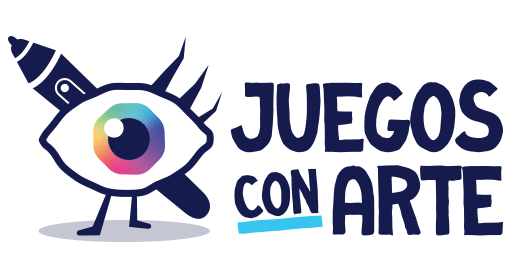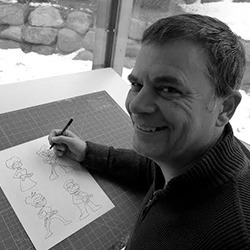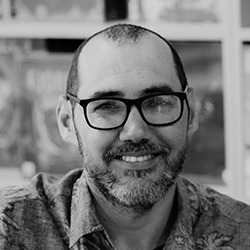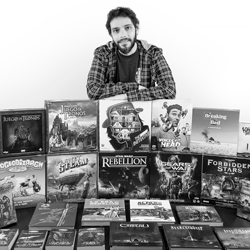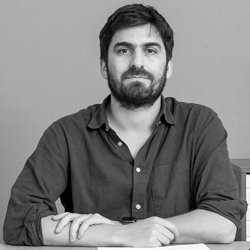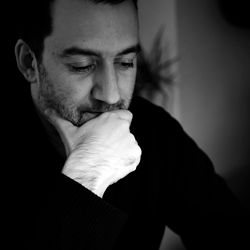
Vincent Dutrait es uno de los principales artistas de la industria de los juegos de mesa. Hemos tenido el enorme placer de hablar con él sobre sus inicios como ilustrador profesional, el proceso de creación de algunos de sus títulos más famosos y nos dio algunos consejos para los ilustradores noveles y profesionales del sector.
Os dejamos con la entrevista, no olvidéis compartir la entrevista y dejar un comentario más abajo si te ha gustado 😉
ENG | Welcome Vincent, if there are still some of our readers who don’t know about your great work in this sector, could you tell us a little about yourself and your beginnings in the world of illustration?
When I was a kid and teenager, I was interested in Roleplaying games and Choose-your-own-adventure books. I was fascinated by the illustrations. The art made me dream, and I had one wish – to do the same thing with my own art. So, later, I studied illustration and graphic design at the Ecole Emile Cohl Art School in Lyon (graduated in 1997).
ESP | Bienvenido Vincent, si todavía hay algunos de nuestros lectores que no conocen tu gran trabajo en este sector, ¿podrías hablarnos un poco de ti y de tus inicios en el mundo de la ilustración?
Cuando era niño y adolescente, me interesaban los juegos de rol y los libros de «Elige tu propia aventura». Me fascinaban las ilustraciones. El arte me hacía soñar y tenía un deseo: hacer lo mismo con mi propio arte. Así que, más tarde, estudié ilustración y diseño gráfico en la Escuela de Arte Emile Cohl de Lyon (me gradué en 1997).
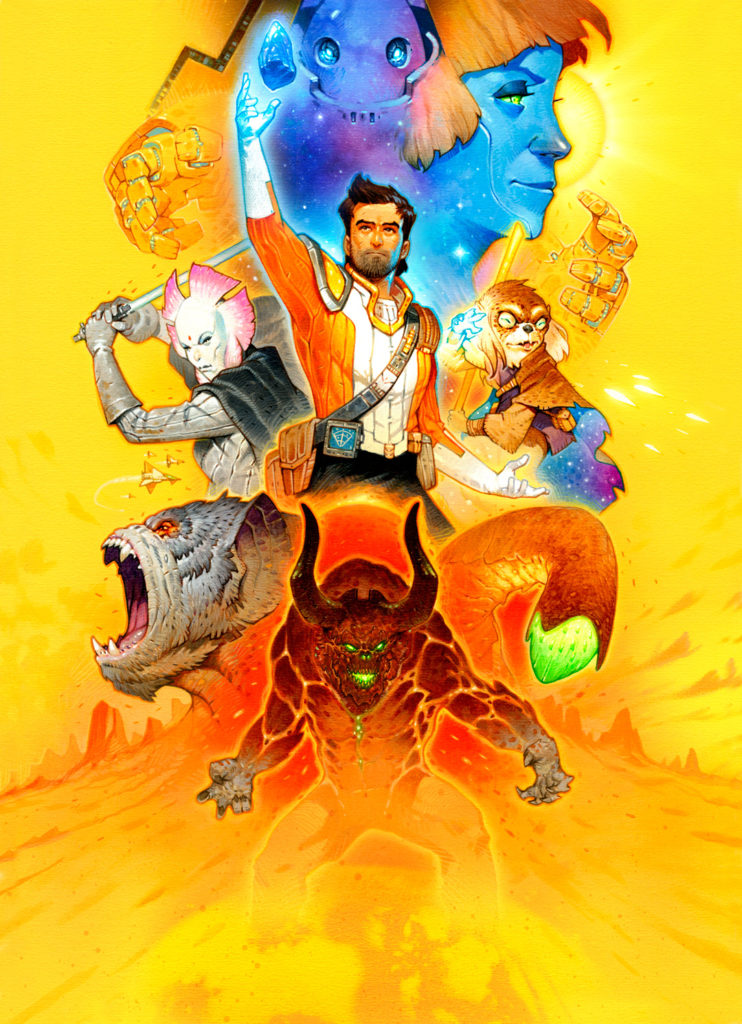
ENG | How did you first get involved in illustrating a board game and what did you learn from that project?
My first game is “China Moon” designed by Bruno Faidutti. Published by Jeux Descartes in France in 2002… It’s only really been since 2010 with Water Lily and Tikal II (for Gameworks) that I became truly involved in the world of board games. I discovered a complex world because most of the games could be played simply with numbers and colors… The illustrations must increase the game feeling, the gameplay. The illustrations are not used to « look pretty », like a decorative function only. Illustrations MUST have an efficient role in the game.
ESP | ¿Cómo se involucró por primera vez en la ilustración de un juego de mesa y qué aprendió de ese proyecto?
Mi primer juego es «China Moon», diseñado por Bruno Faidutti. Publicado por Jeux Descartes en Francia en 2002… Sólo a partir de 2010 con Water Lily y Tikal II (para Gameworks) me involucré realmente en el mundo de los juegos de mesa. Descubrí un mundo complejo porque la mayoría de los juegos se podían jugar simplemente con números y colores… Las ilustraciones deben aumentar la sensación de juego, la jugabilidad. Las ilustraciones no se utilizan para «quedar bonitas», como una función decorativa solamente. Las ilustraciones DEBEN tener una función eficiente en el juego.
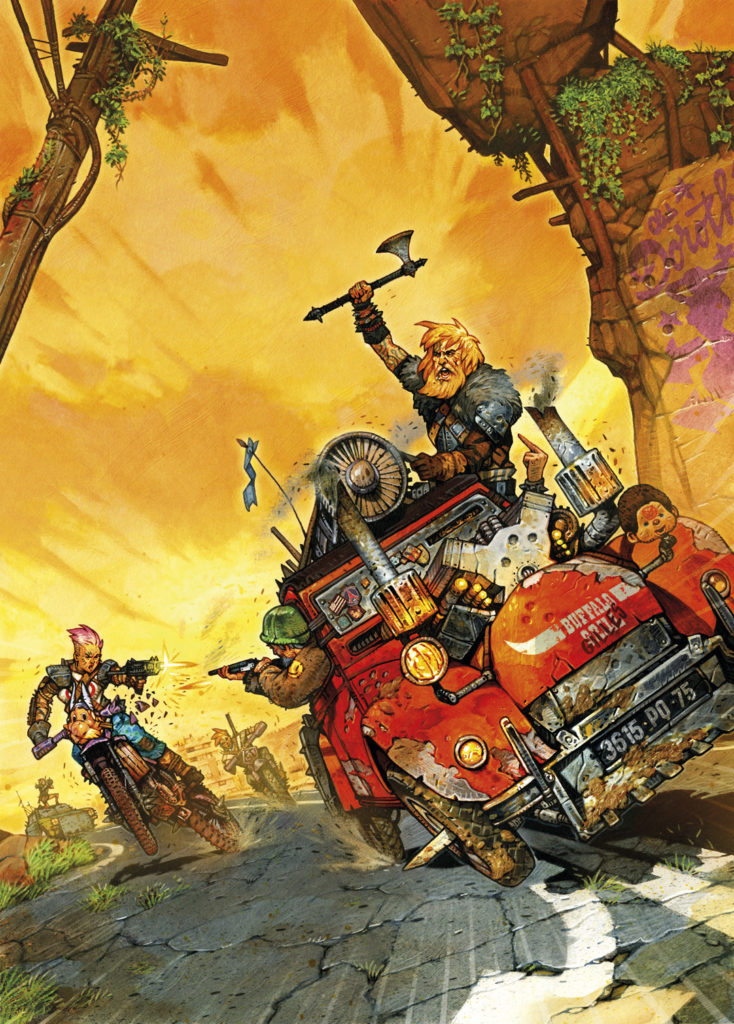

ENG | All of us who follow you have been able to see you always surrounded by watercolours, brushes, pencils… to create your work. What do you get from traditional illustration that you can’t get with the new digital techniques?
I always use acrylic paints because it is a “multifunctions” medium, close to oil painting, it is possible to “mimic” watercolor, gouache effects, etc. I’m still working in the “traditional way,» with pencils, brushes, and paints on paper. The physical contact with the materials and tools is very important for me, also because the piece I see in front of me while painting will be very close to the printed product in the hands of the players. The link is more direct – we can both “touch” the art.
ESP | Todos los que te seguimos hemos podido verte siempre rodeado de acuarelas, pinceles, lápices… para crear tus obras. ¿Qué consigues con la ilustración tradicional que no puedas conseguir con las nuevas técnicas digitales?
Siempre utilizo pinturas acrílicas porque es un medio «multifuncional», cercano al óleo, es posible «imitar» la acuarela, los efectos del gouache, etc. Sigo trabajando a la «manera tradicional», con lápices, pinceles y pinturas sobre papel. El contacto físico con los materiales y las herramientas es muy importante para mí, también porque la pieza que veo delante de mí mientras pinto estará muy cerca del producto impreso en las manos de los jugadores. El vínculo es más directo: ambos podemos «tocar» el arte.
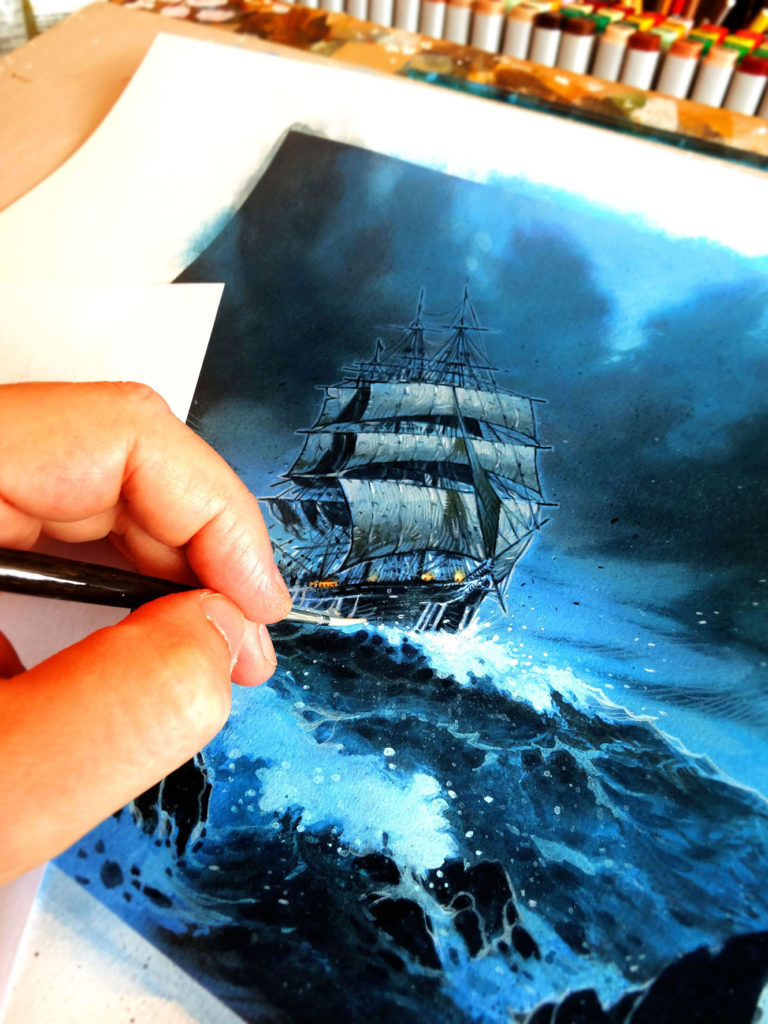
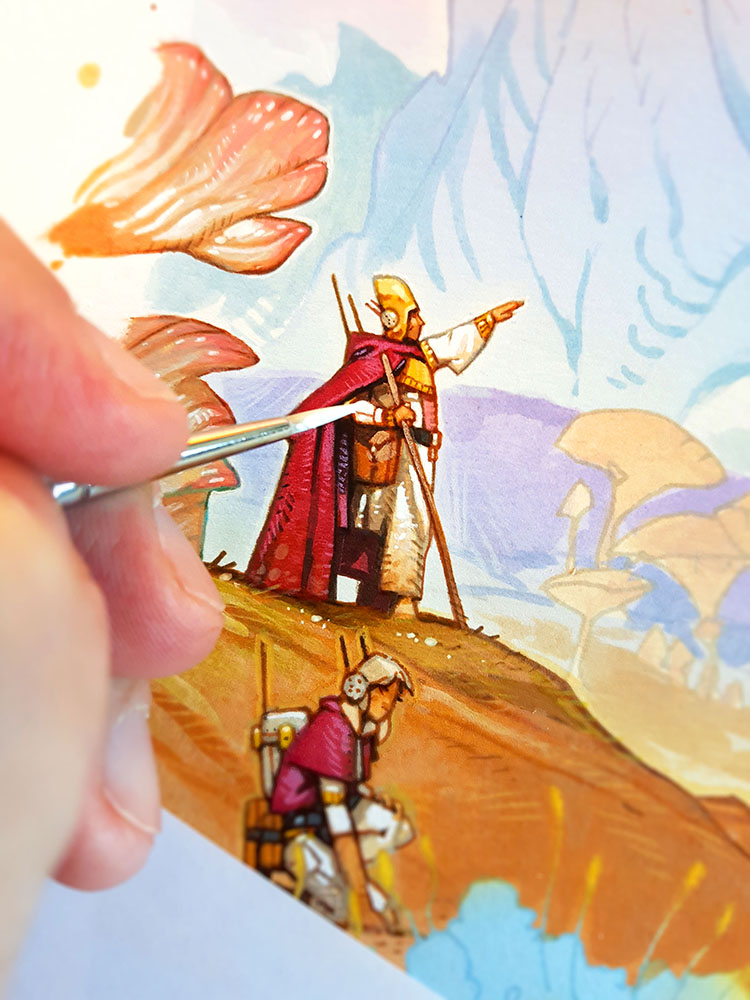
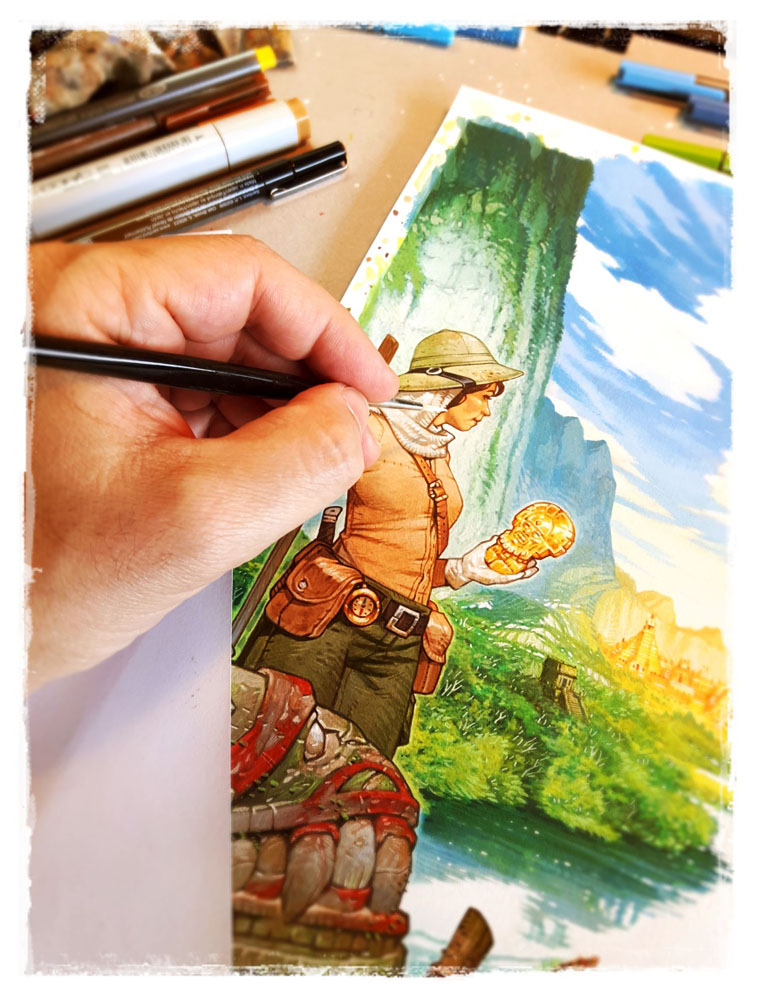

ENG | We would like to highlight your work on the new edition of the classic board game Lewis & Clark. How has it been to illustrate the game again after 7 years?
So good! Because it’s my complete point of view, in two parts, about this great journey, “Lewis & Clark” and its sequel “Discoveries». I had the great opportunity to work on the story and environments in many various forms, I felt that I covered many angles about history, culture, and moods. For the new edition, I just did a new cover and I was very happy to extend my vision with a new piece, close to the movies like “The Fat Country” by Anthony Mann.
ESP | Nos gustaría destacar su trabajo en la nueva edición del clásico juego de mesa Lewis & Clark. ¿Cómo ha sido volver a ilustrar el juego después de 7 años?
Muy bueno. Porque es mi punto de vista completo, en dos partes, sobre este gran viaje, «Lewis & Clark» y su secuela «Descubrimientos». Tuve la gran oportunidad de trabajar en la historia y los entornos de varias formas, sentí que cubría muchos ángulos sobre la historia, la cultura y los estados de ánimo. Para la nueva edición, acabé de hacer una nueva portada y estuve muy contento de ampliar mi visión con una nueva pieza, cercana a las películas como «The Fat Country» de Anthony Mann.
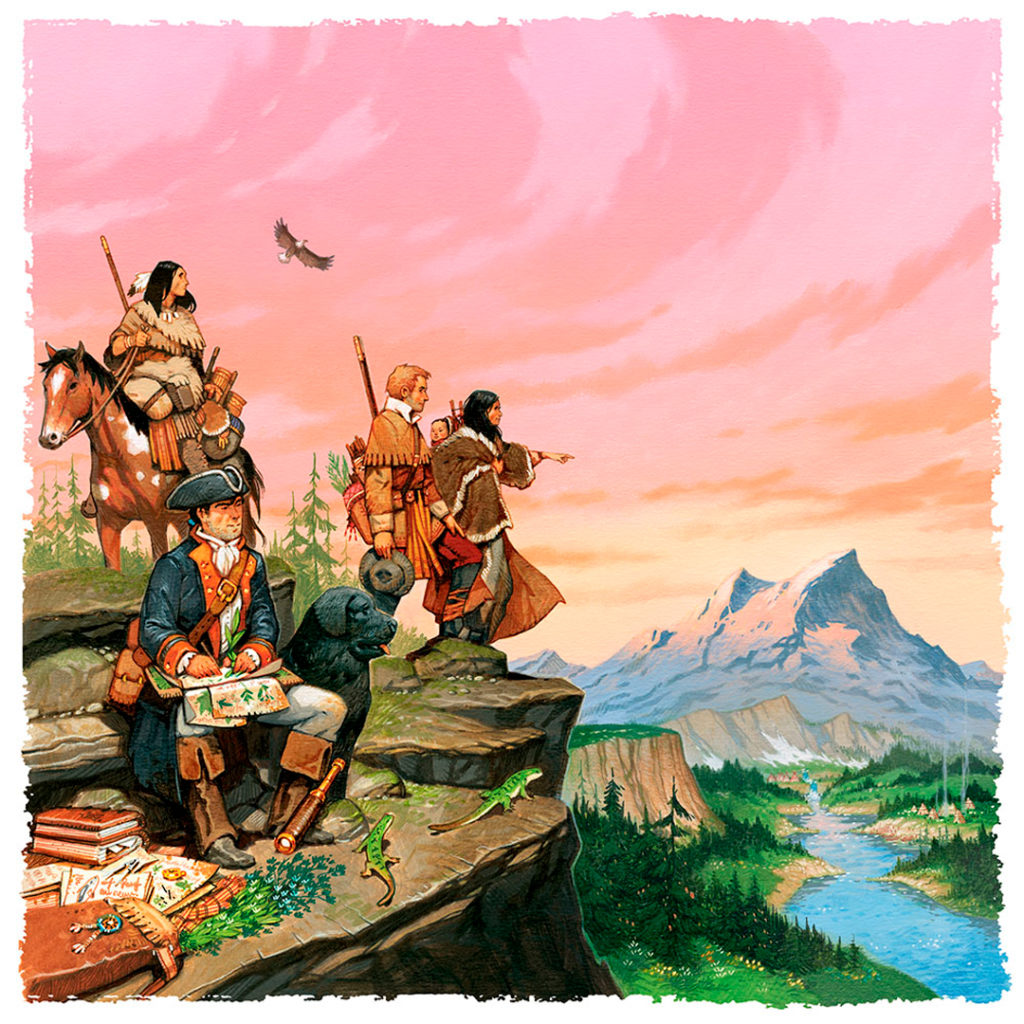
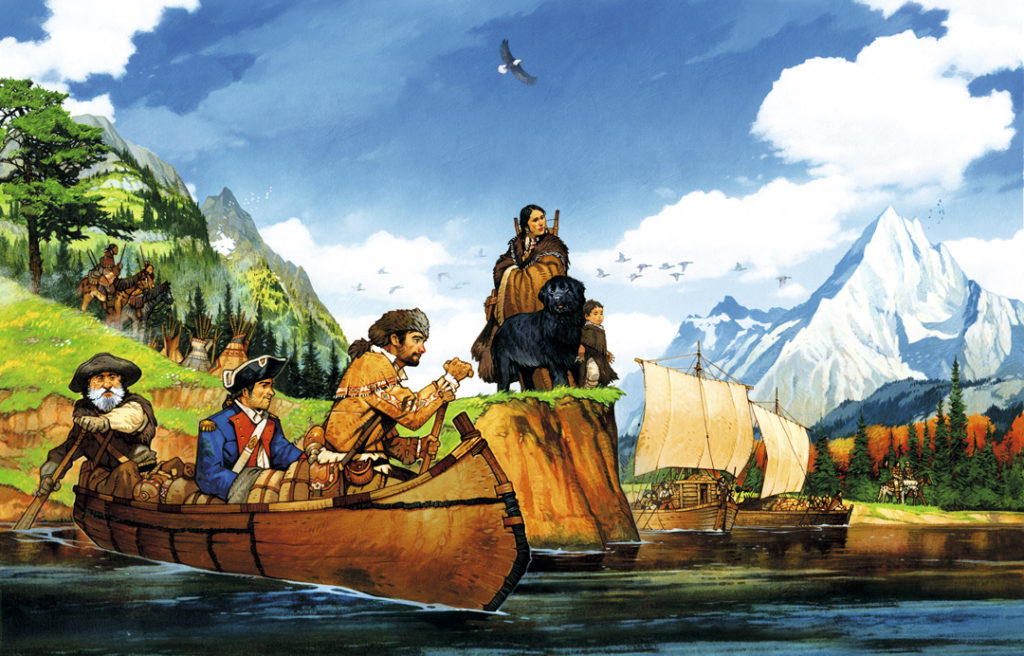
ENG | What steps do you follow when working on a board game? Tell us about that creative process, from the emergence of the first idea or purpose to the final artwork.
Documentations and references are so important, I research and use a lot. And I think a lot. I never do many rough sketches or doodles. I prefer to show only one main idea and then we talk. Sometimes thinking and preparing my illustrations is maybe more than 2/3 of the work!
I first talk with the publisher to find the better way to illustrate his project, to find the most appropriate style. It is very important to pick the right tone, and it must be set well in advance. The editor and designer should always define a clear direction.
ESP | ¿Qué pasos sigues cuando trabajas en un juego de mesa? Háblanos de ese proceso creativo, desde la aparición de la primera idea o propósito hasta la obra final.
La documentación y las referencias son muy importantes, investigo y uso mucho. Y pienso mucho. Nunca hago muchos bocetos o garabatos. Prefiero mostrar sólo una idea principal y luego hablamos. A veces, pensar y preparar mis ilustraciones es quizá ¡más de 2/3 del trabajo!
Primero hablo con el editor para encontrar la mejor manera de ilustrar su proyecto, para encontrar el estilo más apropiado. Es muy importante elegir el tono adecuado, y hay que fijarlo con mucha antelación. El editor y el diseñador deben definir siempre una dirección clara.
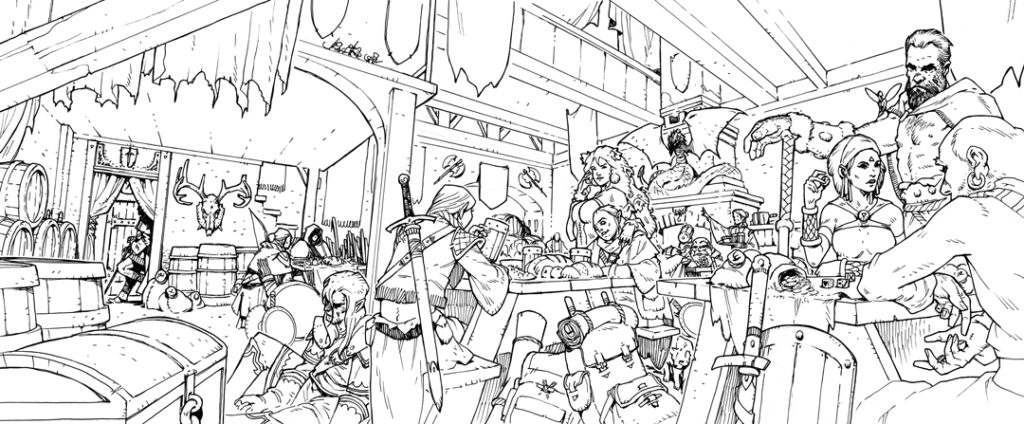
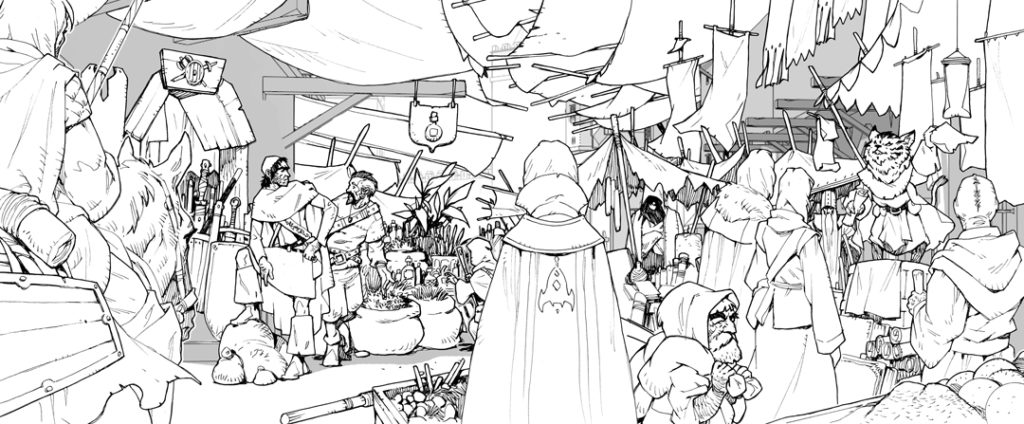
ENG | You are responsible for the art of the beautiful board game Museum. How was the process of documentation and inspiration to recreate each piece of the different civilisations?
I tried to avoid some simple representations of the pieces. I had the idea to go deeper by introducing them all with different points of view, to boost the immersion in the game and to show the multiple “roles” of the players widely. Sometimes at the moment of the discovery of the relics, or during transportation to the museum, when the curators are preparing the installation in the galleries, when scientists and archeologists are analyzing and restoring the pieces…
ESP | Eres el responsable del arte del hermoso juego de mesa Museum. ¿Cómo fue el proceso de documentación e inspiración para recrear cada pieza de las diferentes civilizaciones?
Intenté evitar algunas representaciones simples de las piezas. Tuve la idea de profundizar presentándolas todas con diferentes puntos de vista, para potenciar la inmersión en el juego y mostrar ampliamente los múltiples «roles» de los jugadores. A veces en el momento del descubrimiento de las reliquias, o durante el transporte al museo, cuando los conservadores están preparando la instalación en las galerías, cuando los científicos y arqueólogos están analizando y restaurando las piezas…
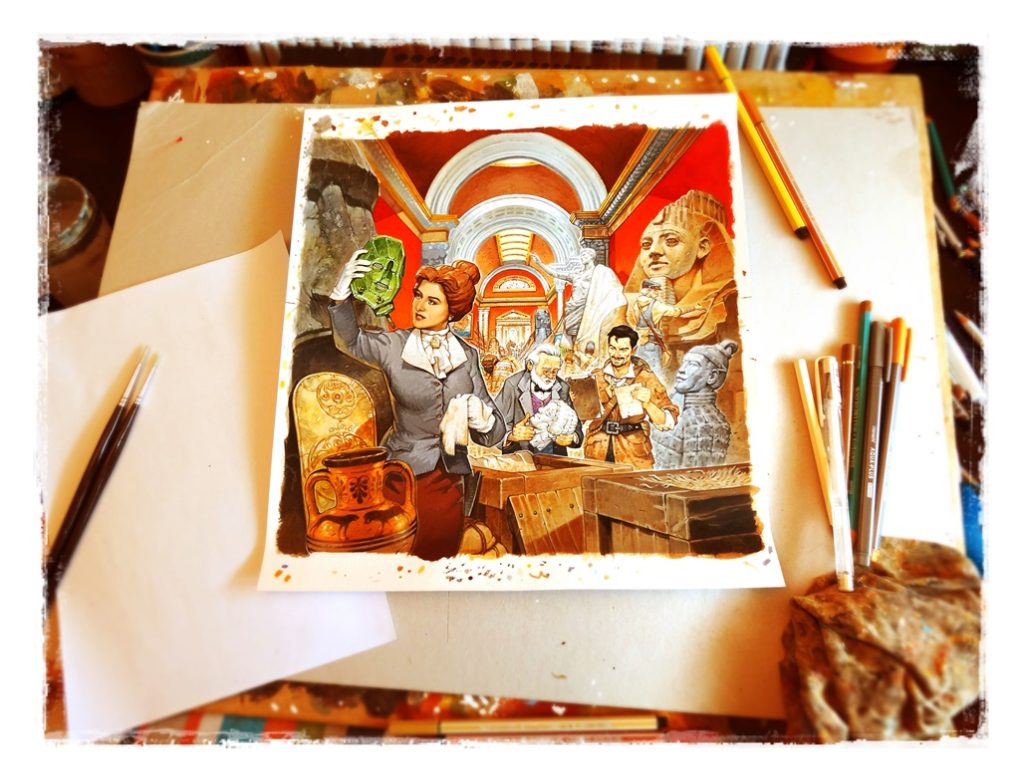
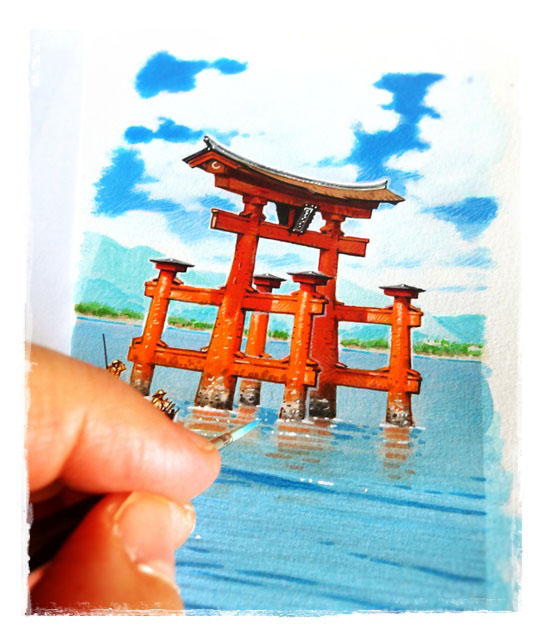
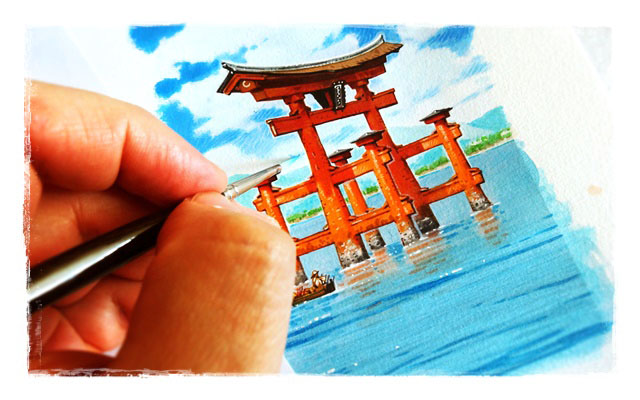
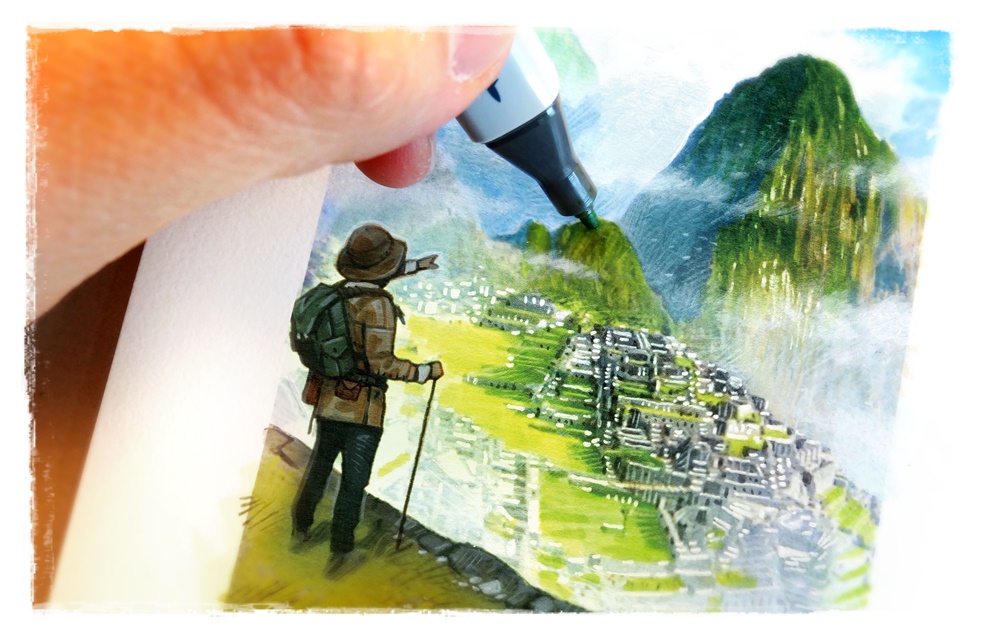
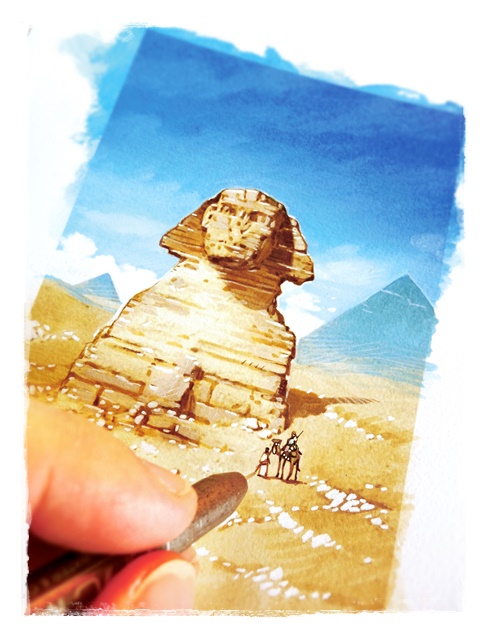
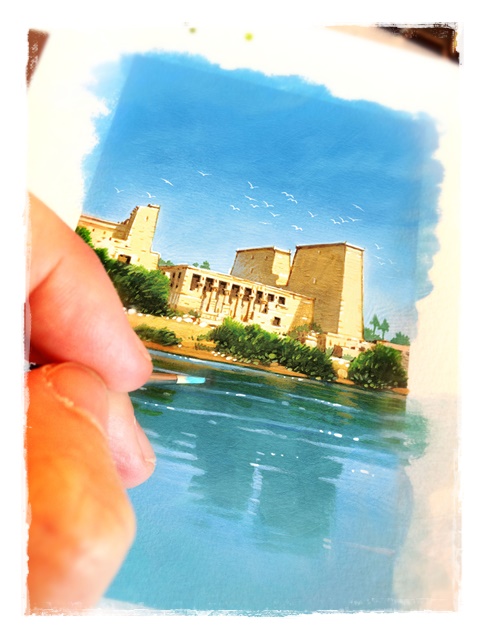
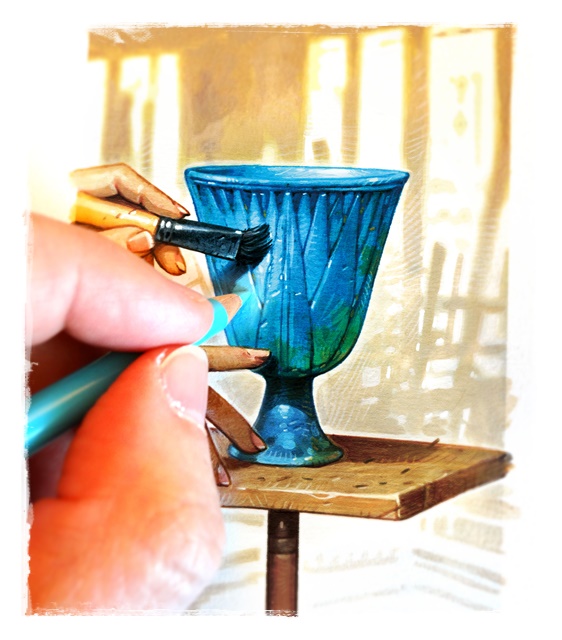
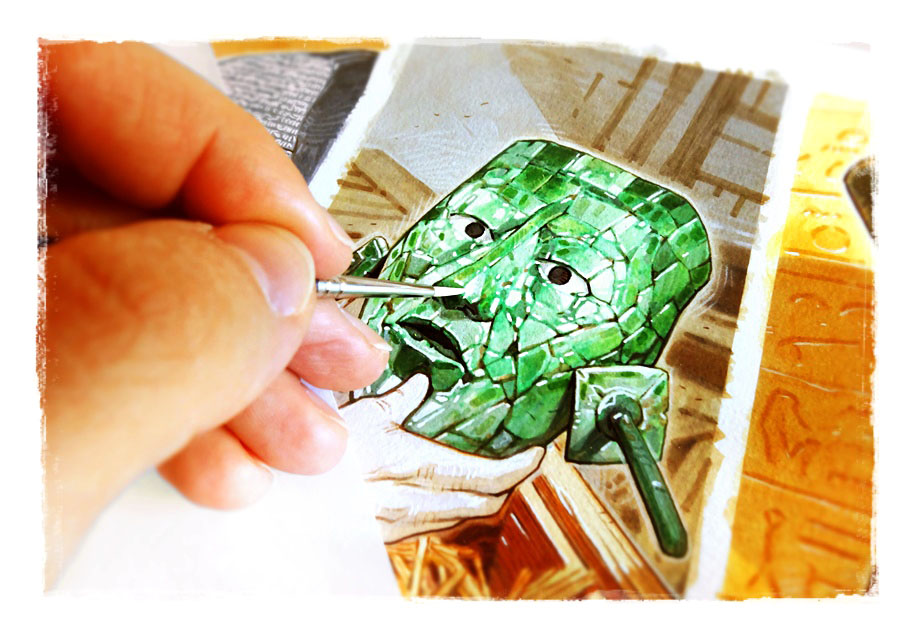
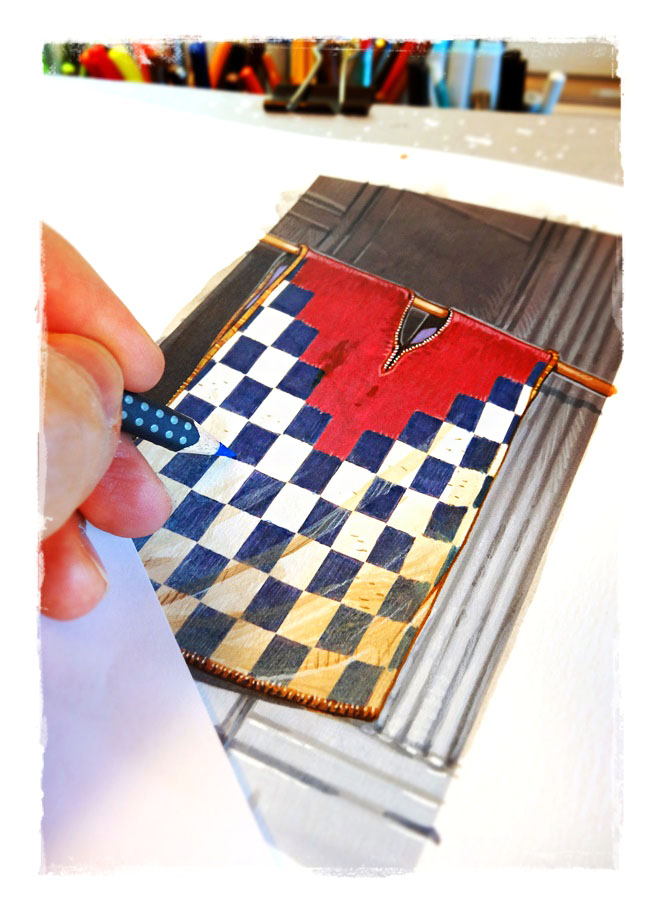

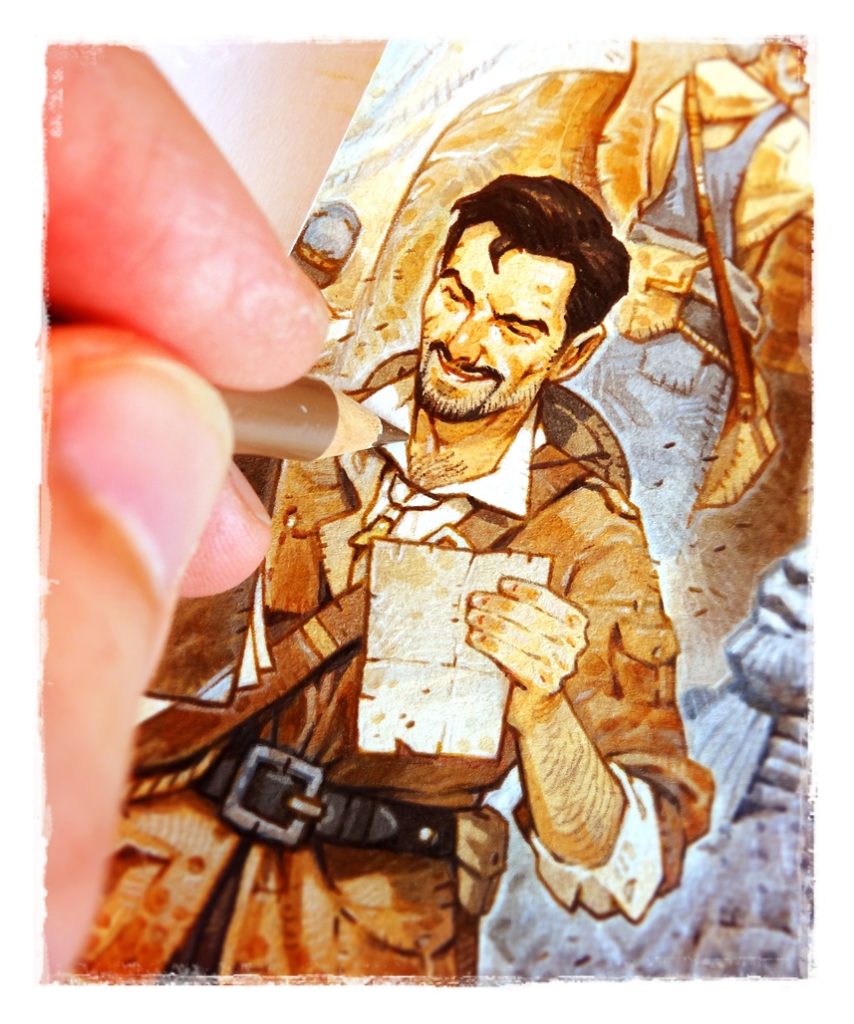
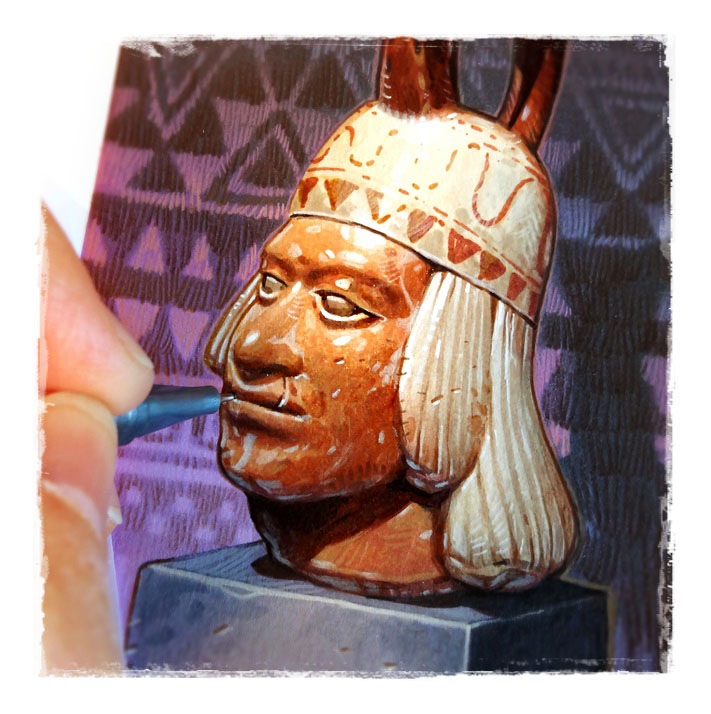
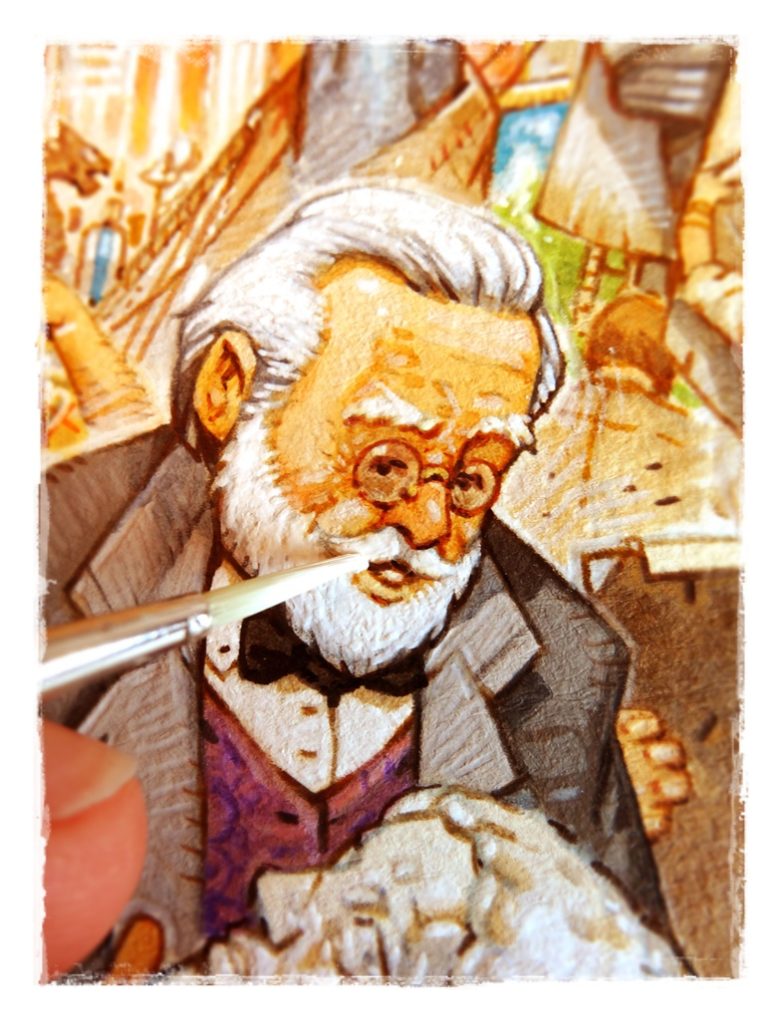
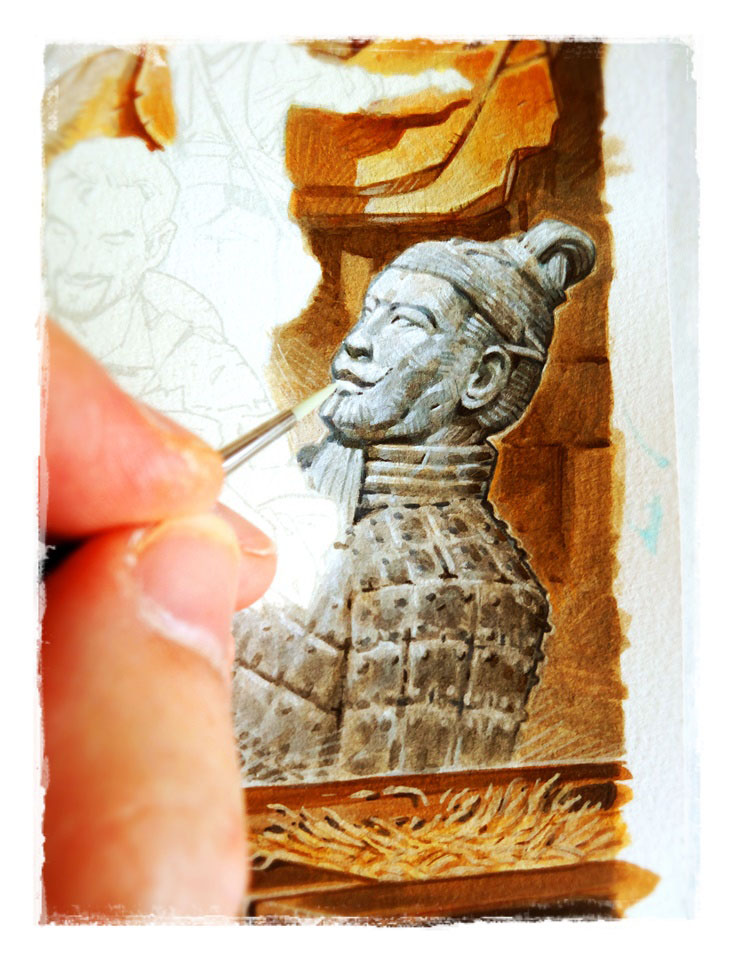
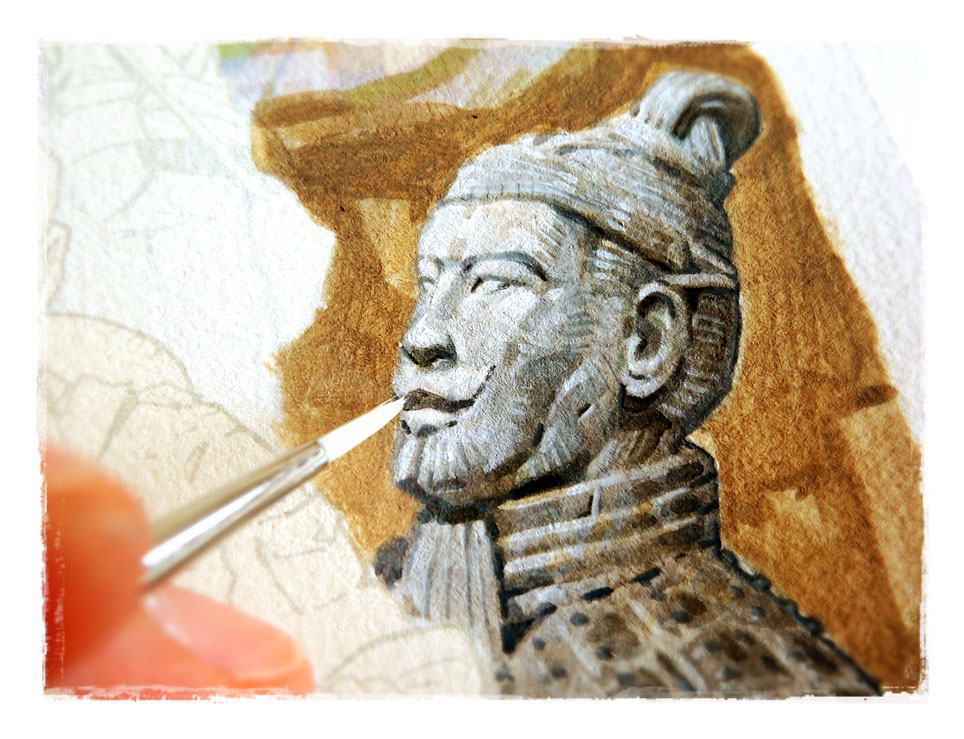
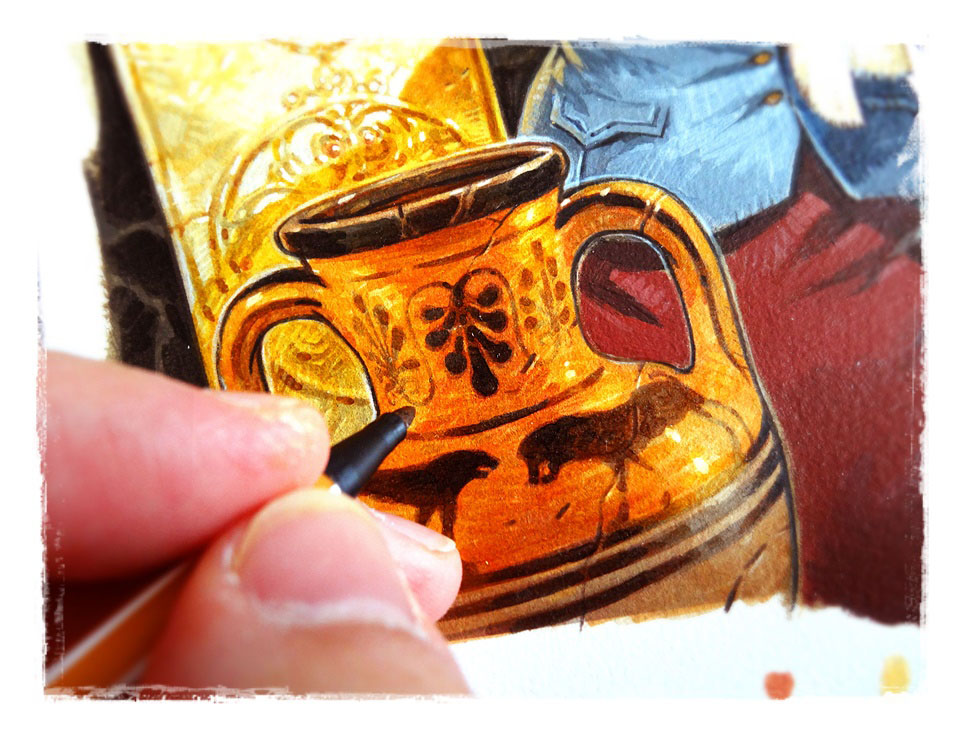
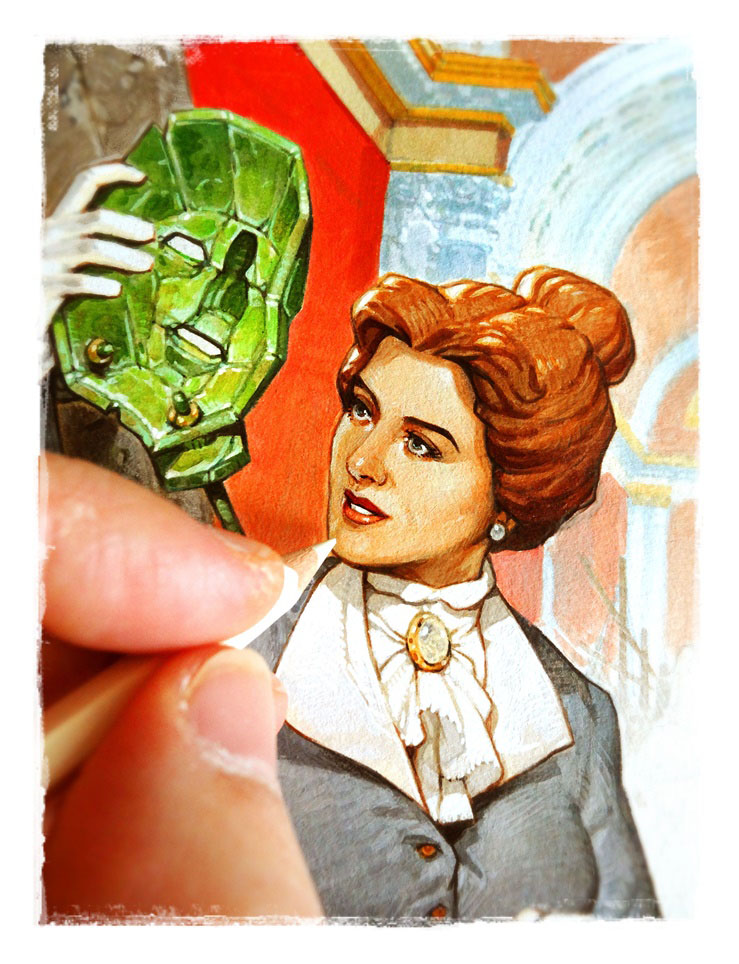
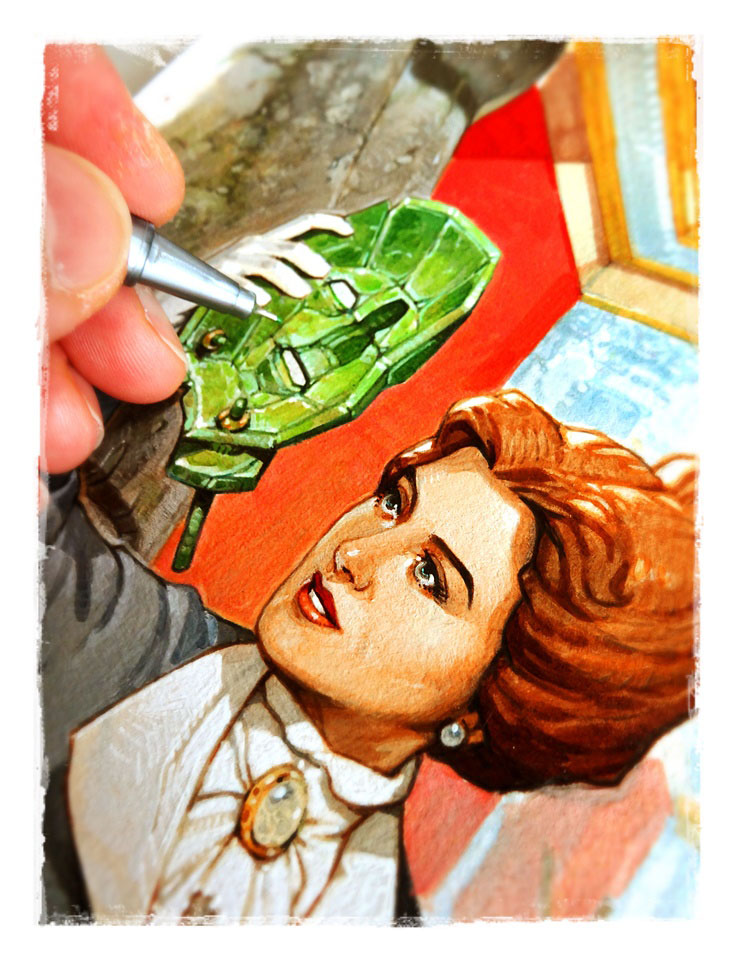
ENG | When you illustrate a board game, the illustrator and the designer must form a tandem to adapt the art to the gameplay and usability of the game. Could you give our readers 3 tips that you consider key to illustrate a board game?
I’m agree about the tandem but more and more publishers are breaking the link by trying to control all the process and steps. Unfortunately, on some games, I never had the chance to discuss with the designer…
Anyway, just three words: work, work and work. Think a lot and keep it simple! To boost the link and balance between substance and form. To guide and help the players, to fill or free their minds to increase the quality of game experience. The illustrations are tool, vehicles and links to make sense. I always think simple and accessibility, because gameplay and mechanics are the most important in the game.
ESP | Cuando se ilustra un juego de mesa, el ilustrador y el diseñador deben formar un tándem para adaptar el arte a la jugabilidad y usabilidad del juego. ¿Podría dar a nuestros lectores 3 consejos que considera clave para ilustrar un juego de mesa?
Estoy de acuerdo con el tándem, pero cada vez más editores rompen el vínculo al intentar controlar todo el proceso y los pasos. Desgraciadamente, en algunos juegos, nunca tuve la oportunidad de discutir con el diseñador…
En fin, sólo tres palabras: trabajo, trabajo y trabajo. ¡Piensa mucho y hazlo de forma sencilla! Potenciar el vínculo y el equilibrio entre el fondo y la forma. Guiar y ayudar a los jugadores, llenar o liberar sus mentes para aumentar la calidad de la experiencia de juego. Las ilustraciones son herramientas, vehículos y enlaces para dar sentido. Siempre pienso en la sencillez y la accesibilidad, porque la jugabilidad y la mecánica son lo más importante del juego.

ENG | We are absolute fans of the universe you create in each of your illustrations. What inspirations or references would you say have influenced your way of working or vision when illustrating?
I admire the American painters of the early twentieth century, especially Newell Convers Wyeth. Wyeth was a painter and illustrator, as was his master Howard Pyle, who I also like. Not to mention Dean Cornwell, Frank Schoonover, Harvey Dun, Maxfield Parish… The list of painters and illustrators that I like is rather long. Arthur Rackham, Edmund Dulac, John Howe, Joseph Clement Coll, James Gurney, Frazetta, Alan Lee, François Boucq, Cosey, Taniguchi, Otomo for comics, Miyazaki for animation and many others!
I spend a lot of time online and in bookstores searching for new artists, new books and collections of illustrations to complete my library. I have a huge collection of artbooks at home and I just discovered amazing woodblock japanese artists, Kawase Hasui et Yoshida Hiroshi.
ESP | Somos fans absolutos del universo que creas en cada una de tus ilustraciones. ¿Qué inspiraciones o referencias dirías que han influido en tu forma de trabajar o en tu visión a la hora de ilustrar?
Admiro a los pintores americanos de principios del siglo XX, especialmente a Newell Convers Wyeth. Wyeth era pintor e ilustrador, al igual que su maestro Howard Pyle, que también me gusta. Por no hablar de Dean Cornwell, Frank Schoonover, Harvey Dun, Maxfield Parish… La lista de pintores e ilustradores que me gustan es bastante larga. Arthur Rackham, Edmund Dulac, John Howe, Joseph Clement Coll, James Gurney, Frazetta, Alan Lee, François Boucq, Cosey, Taniguchi, Otomo para los cómics, Miyazaki para la animación y muchos otros.
Paso mucho tiempo en Internet y en las librerías buscando nuevos artistas, nuevos libros y colecciones de ilustraciones para completar mi biblioteca. Tengo una gran colección de libros de arte en casa y acabo de descubrir a los increíbles artistas japoneses de los bloques de madera, Kawase Hasui y Yoshida Hiroshi.
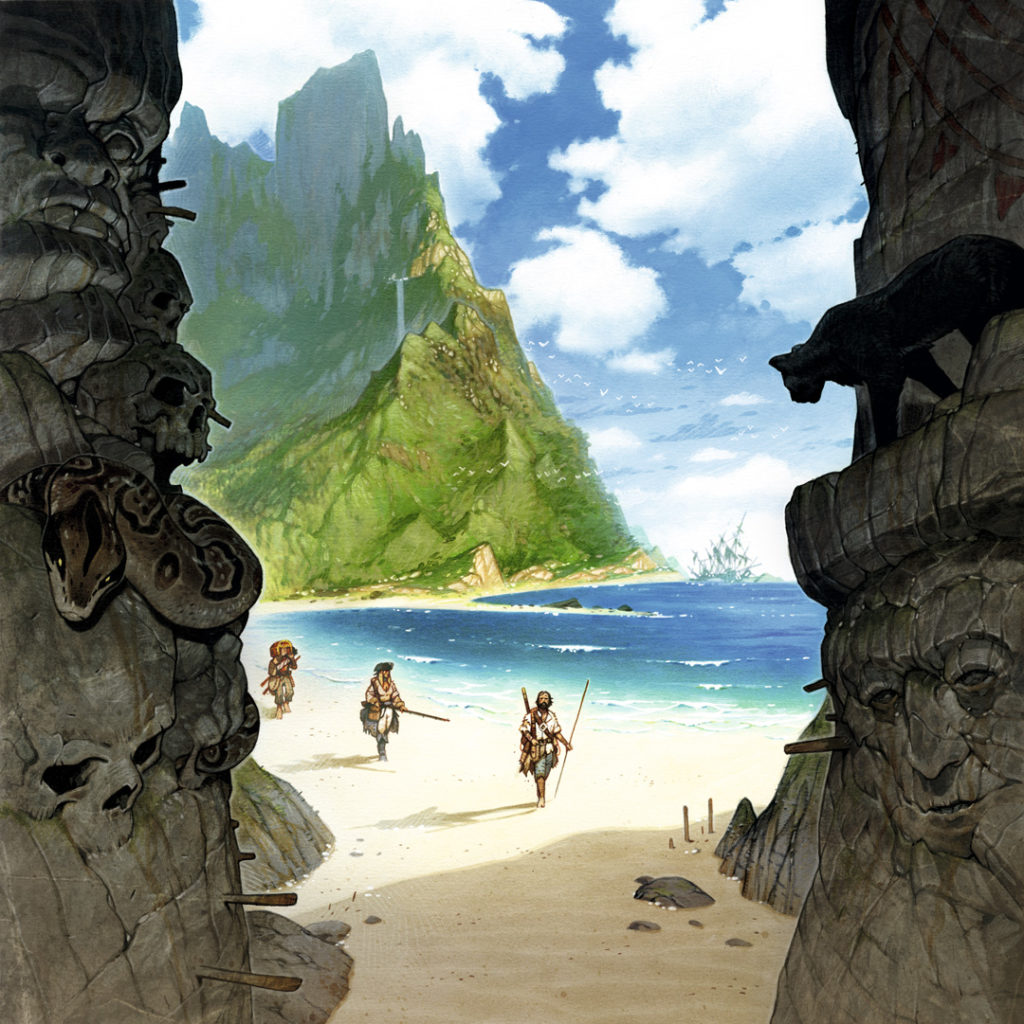

ENG | Working as an illustrator is dedication, effort and passion. What do you like most about your work as an illustrator?
I really enjoy to build a complete universe. I don’t work cards with the same feeling as the artcover or the board. So, on each component, I could find a new and different way to express something about the game, characters, action, atmospheres, etc. Working in boardgame industry, because of all different components (tokens, tiles, boxes, boards, etc), it is always a great journey, impossible to get bored. This variety also force me to question myself, to struggle with new challenges on every new game projects.
ESP | Trabajar como ilustrador es dedicación, esfuerzo y pasión. ¿Qué es lo que más te gusta de tu trabajo como ilustrador?
Me gusta mucho construir un universo completo. No trabajo el arte de las cartas con el mismo sentimiento que en la portada o el tablero. Así, en cada componente, puedo encontrar una forma nueva y diferente de expresar algo sobre el juego, los personajes, la acción, las atmósferas, etc. Trabajar en la industria de los juegos de mesa, debido a todos los componentes diferentes (fichas, azulejos, cajas, tableros, etc.), es siempre un gran viaje, imposible de aburrir. Esta variedad también me obliga a cuestionarme, a luchar con nuevos retos en cada nuevo proyecto de juego.
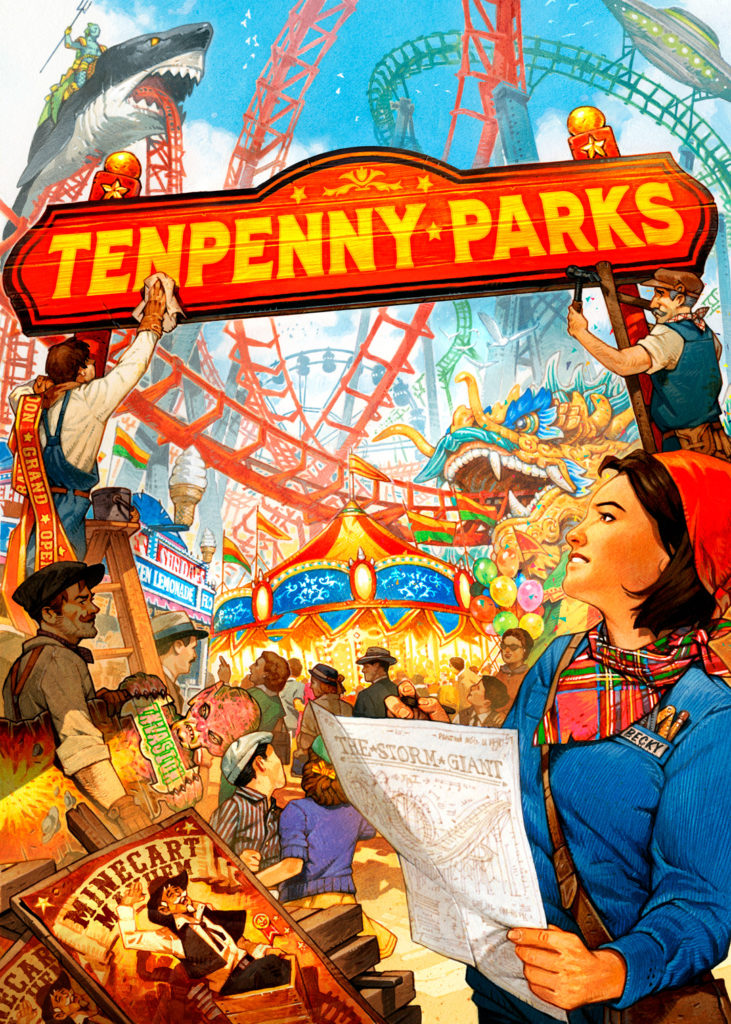
ENG | To finish the interview, what projects are you currently working on?
Right now I’m working on very very different multiple projects! One about tribes of ape species in a kind of “ecological fable” in a post-apocalyptic world, no more humans, and apes will have to work together to evolve. Another one about European Nordic legends and myths, players will have to gather allies to fight against evil trying to destroy forests and natural life… And, oh, I’m also still working on The Quest of El Dorado to expand, more and more, the universe built by Reiner Knizia!
ESP | Para terminar la entrevista, ¿en qué proyectos estás trabajando actualmente?
Ahora mismo estoy trabajando en múltiples proyectos muy diferentes. Uno sobre tribus de especies de simios en una especie de «fábula ecológica» en un mundo post-apocalíptico, ya no hay humanos, y los simios tendrán que trabajar juntos para evolucionar. Otro sobre leyendas y mitos nórdicos europeos, los jugadores tendrán que reunir aliados para luchar contra el mal que intenta destruir los bosques y la vida natural… Y, oh, ¡también sigo trabajando en The Quest of El Dorado para ampliar, cada vez más, el universo construido por Reiner Knizia!
Muchas gracias Vincent 😉
(Todas las imágenes cedidas por Vincent Dutrait)

